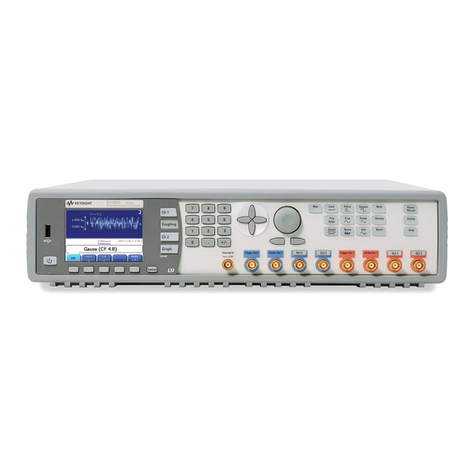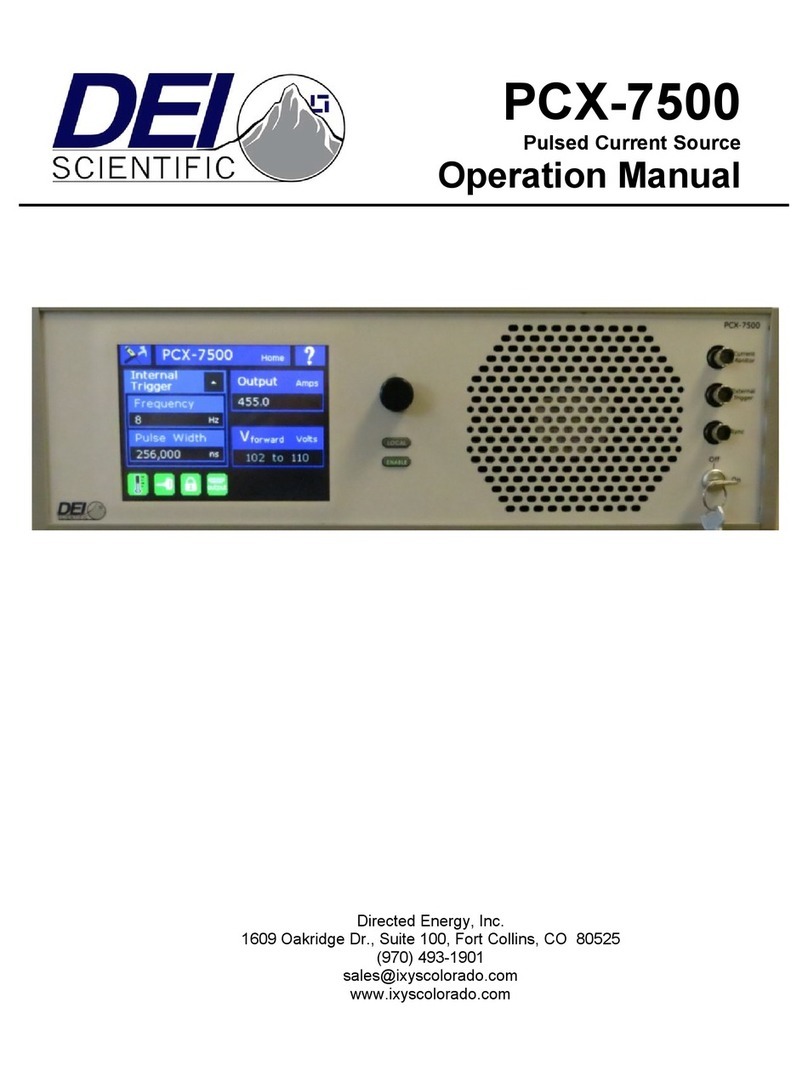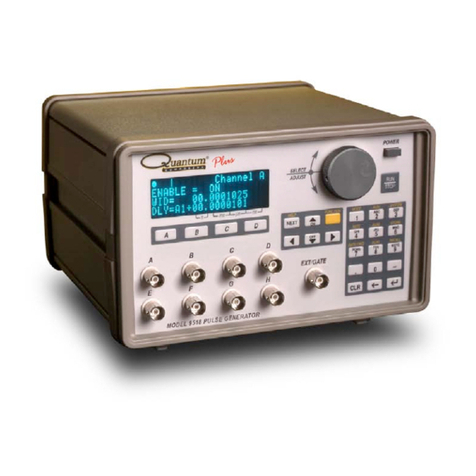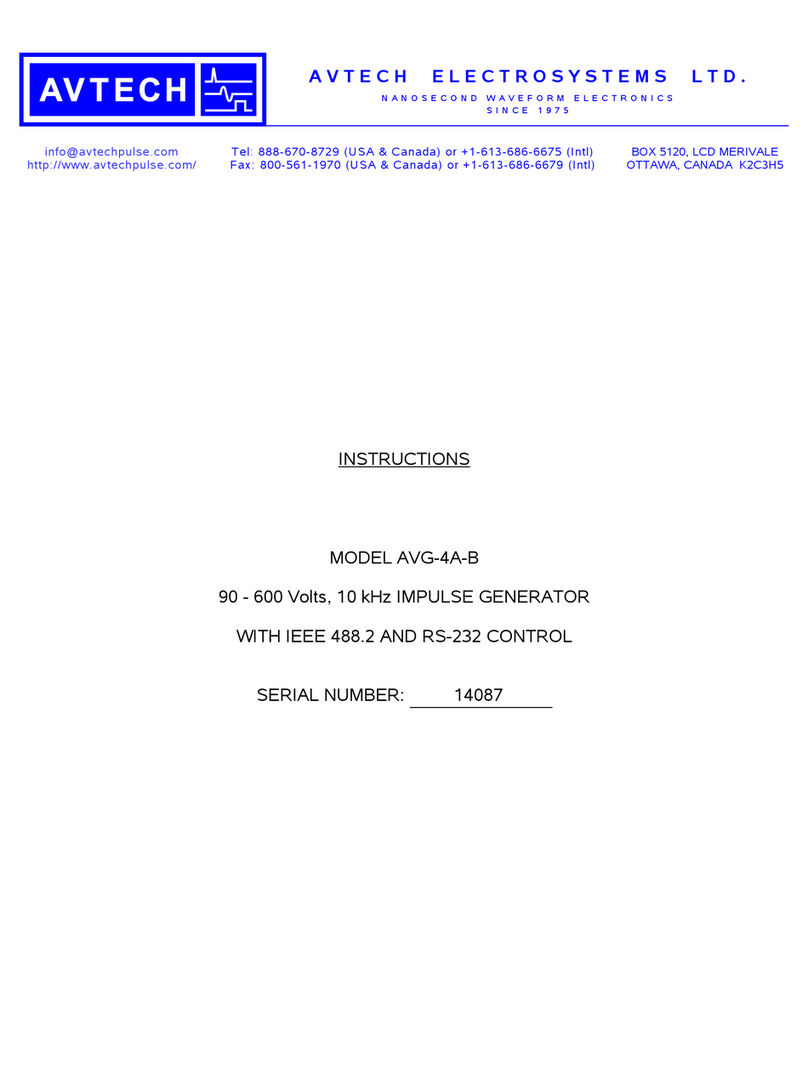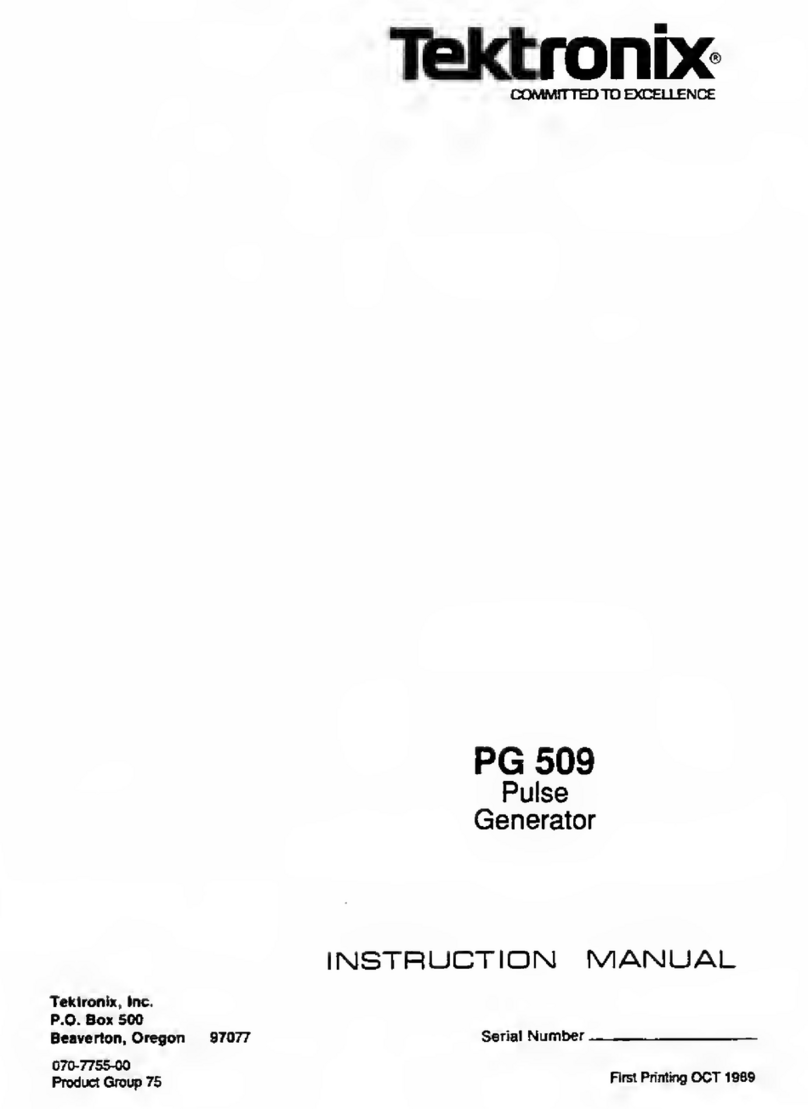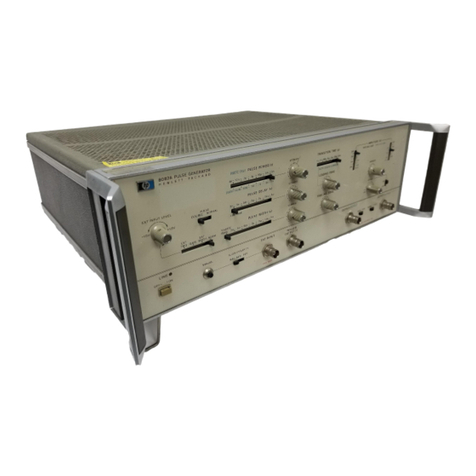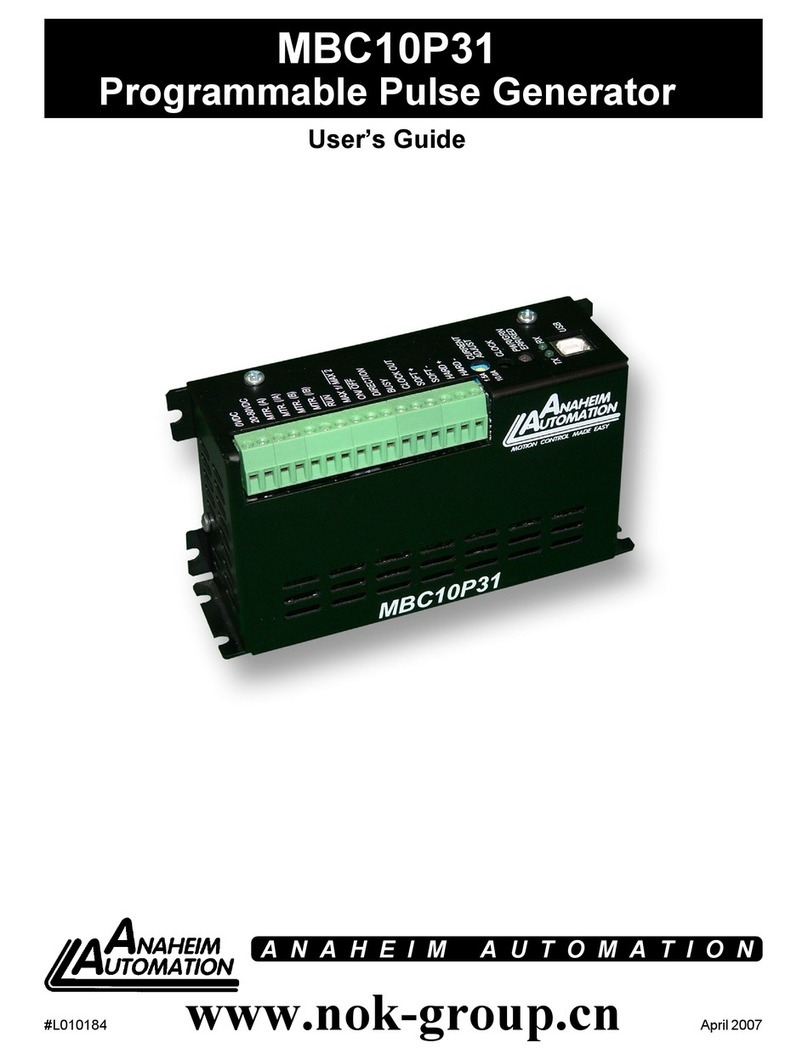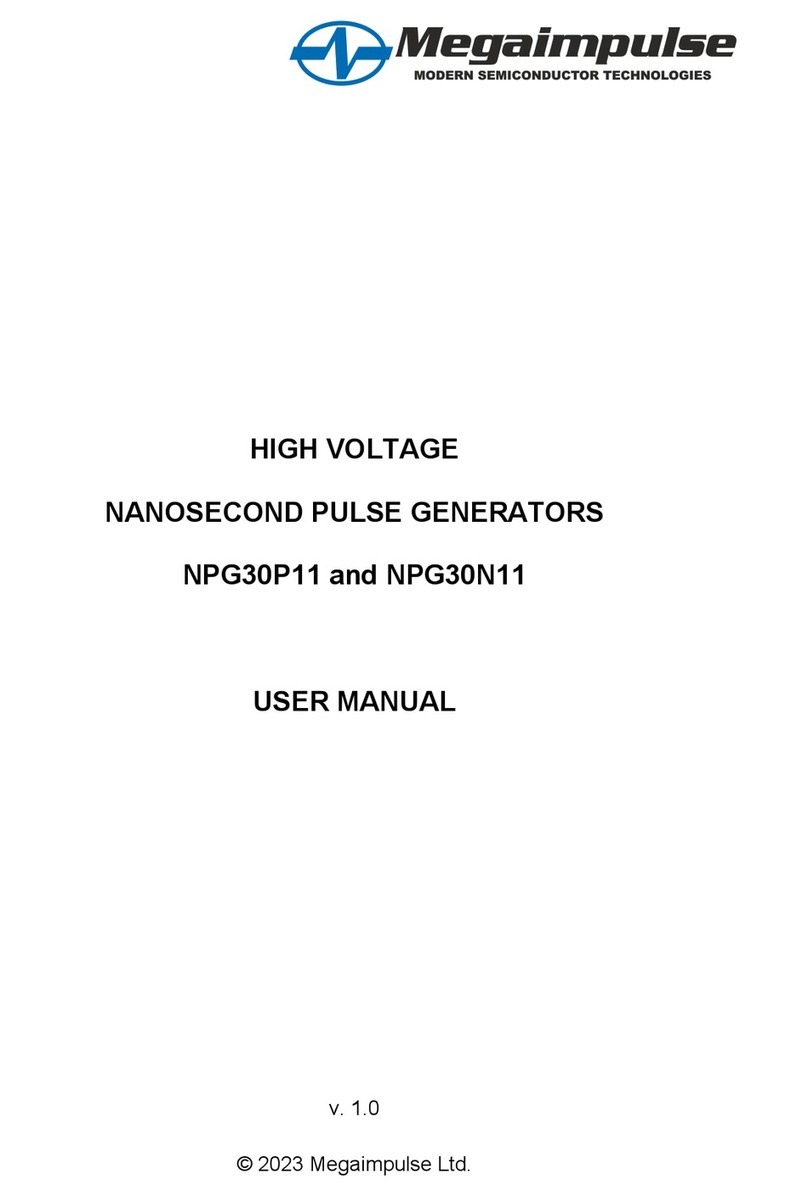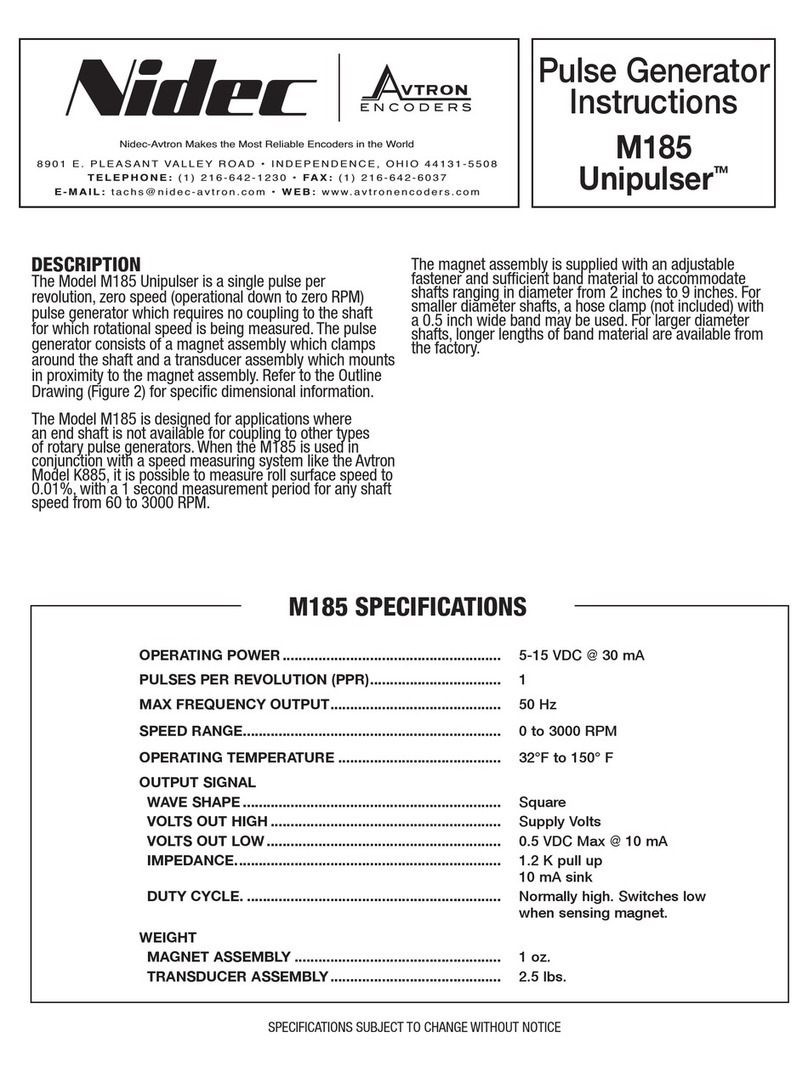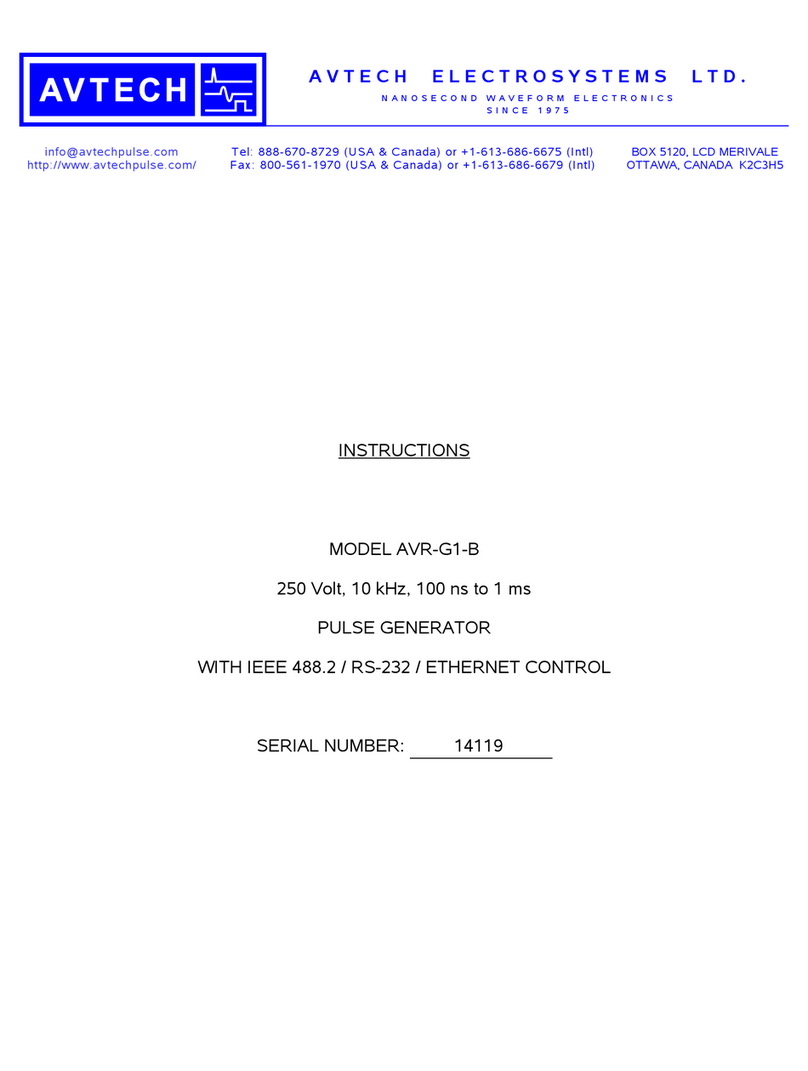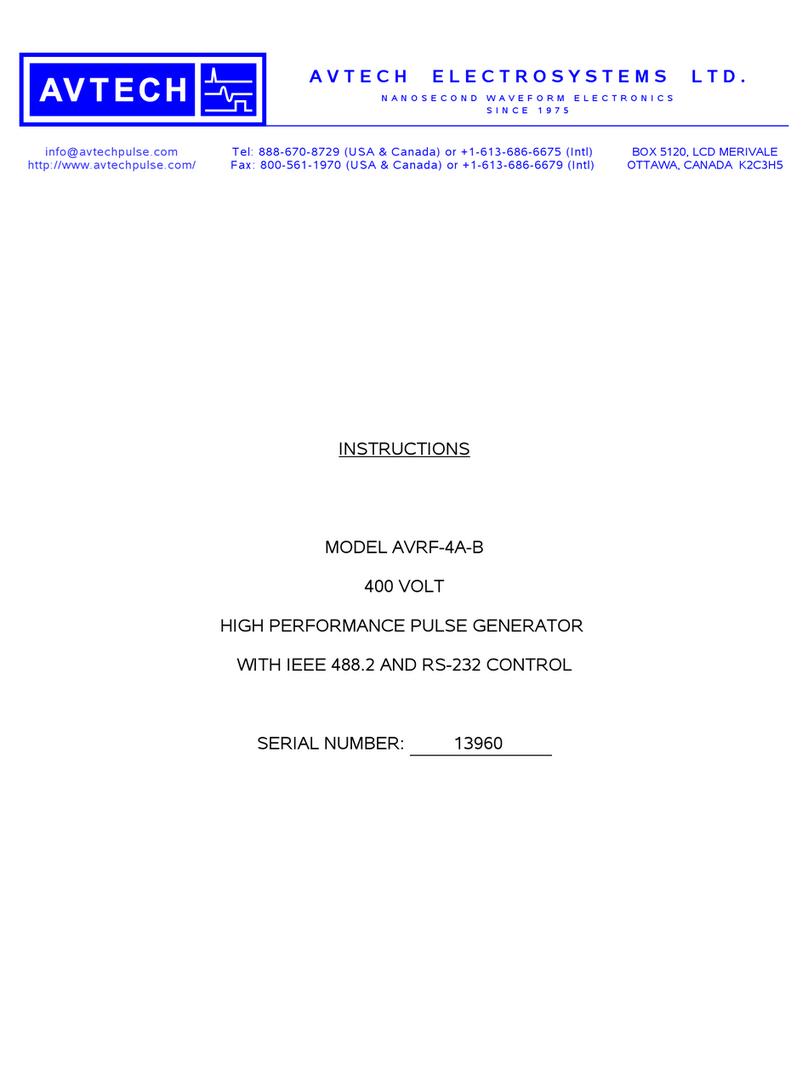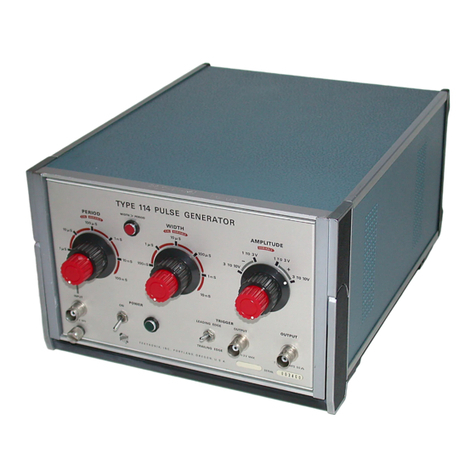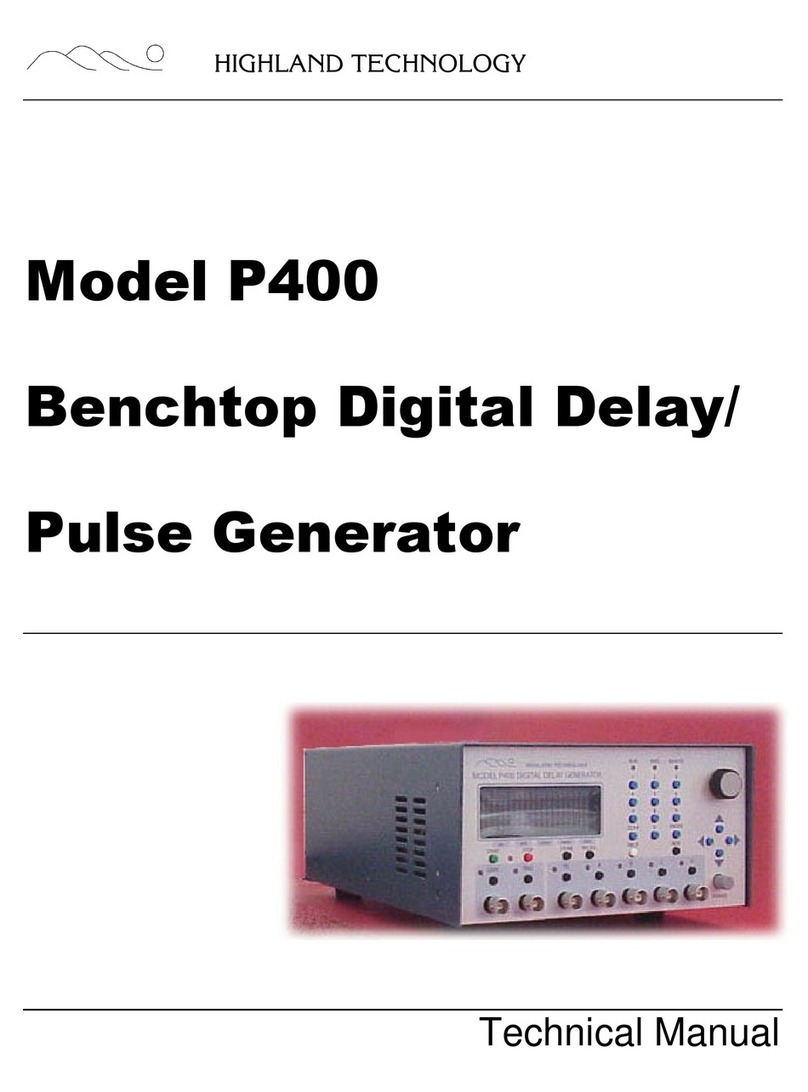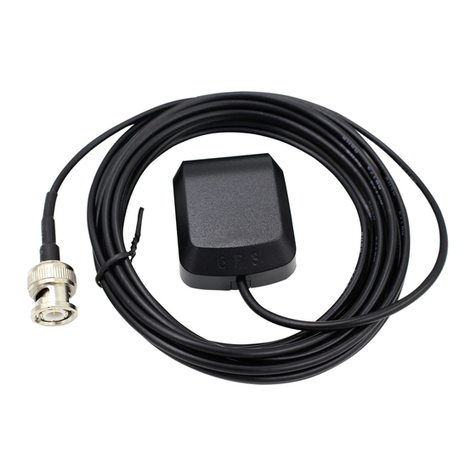7
Operation
POWER
The OPERATE switch turns the instrument on. The switch is on the secondary side of the mains
transformer. Disconnect from the AC supply by unplugging the mains cord from the back of the
instrument or by switching off at the AC supply outlet; make sure that the means of disconnection
is readily accessible. Disconnect from the AC supply when not in use. The OPERATE lamp lights
to show when the instrument is on.
PERIOD, PULSE WIDTH and DELAY CONTROLS
Period, pulse width and pulse delay are each set by the appropriate 8-position switch and vernier
control; the vernier provides continuous adjustment across the selected range.
The appropriate Overlap lamp lights when the pulse width or pulse delay is set greater than the
period.
The operation of the period, pulse width and pulse delay controls depends on the operating mode
selected, see below.
MODE SELECTION
The operating mode is selected by the FUNCTION/MODE control in combination with the Run-
Triggered-Gated switch.
Run Modes
When Run is selected the generator free-runs as described below; external inputs are
disconnected.
With Pulse selected the frequency and pulse width are set by PERIOD and PULSE WIDTH
controls respectively; PULSE DELAY is inoperative.
With Square selected a squarewave is generated at a frequency set by the PERIOD controls;
PULSE WIDTH and PULSE DELAY are inoperative.
With Double Pulse selected two pulses are generated in each period; period and pulse width are
set by the PERIOD and PULSE WIDTH control respectively. The second pulse is generated after
a delay from the leading edge of the first pulse set by the PULSE DELAY control.
With Delayed Pulse selected a single pulse is generated in each period starting after a delay
with respect to the SYNC OUT signal set by the PULSE DELAY controls +40ns. Frequency and
pulse width are set by the PERIOD and PULSE WIDTH controls respectively.
Triggered Modes
For the Triggered modes described below the trigger is derived from either an external signal
applied to the TRIGGER/GATE IN socket or by pressing the Manual button. Pulse width is set by
the PULSE WIDTH controls. Refer also to the timing diagram.
With Pulse selected the generator produces a single pulse which starts typically 100ns after the
positive-going edge of the TRIGGER IN pulse or at each press of the Manual button. The
PERIOD and PULSE DELAY controls are inoperative.
With Double Pulse selected the generator produces two pulses for each trigger signal. The first
pulse of each pair starts typically 100ns after the positive-going edge of the TRIGGER IN pulse
or at each press of the Manual button. The PULSE DELAY controls set the time between the
leading edges of the first and second pulse. The PERIOD controls are inoperative.
With Delayed Pulse selected the generator produces a single pulse which starts after a delay,
set by the PULSE DELAY controls +100ns, from the positive-going edge of the TRIGGER IN
pulse or press of Manual. The PERIOD controls are inoperative.
Triggered Square mode is not available.
